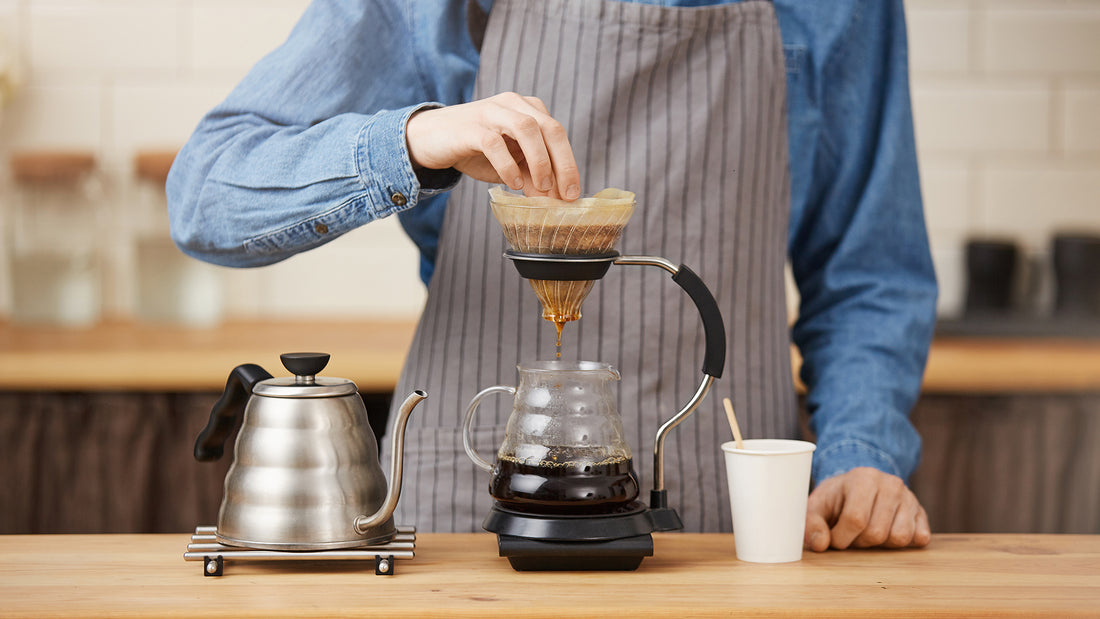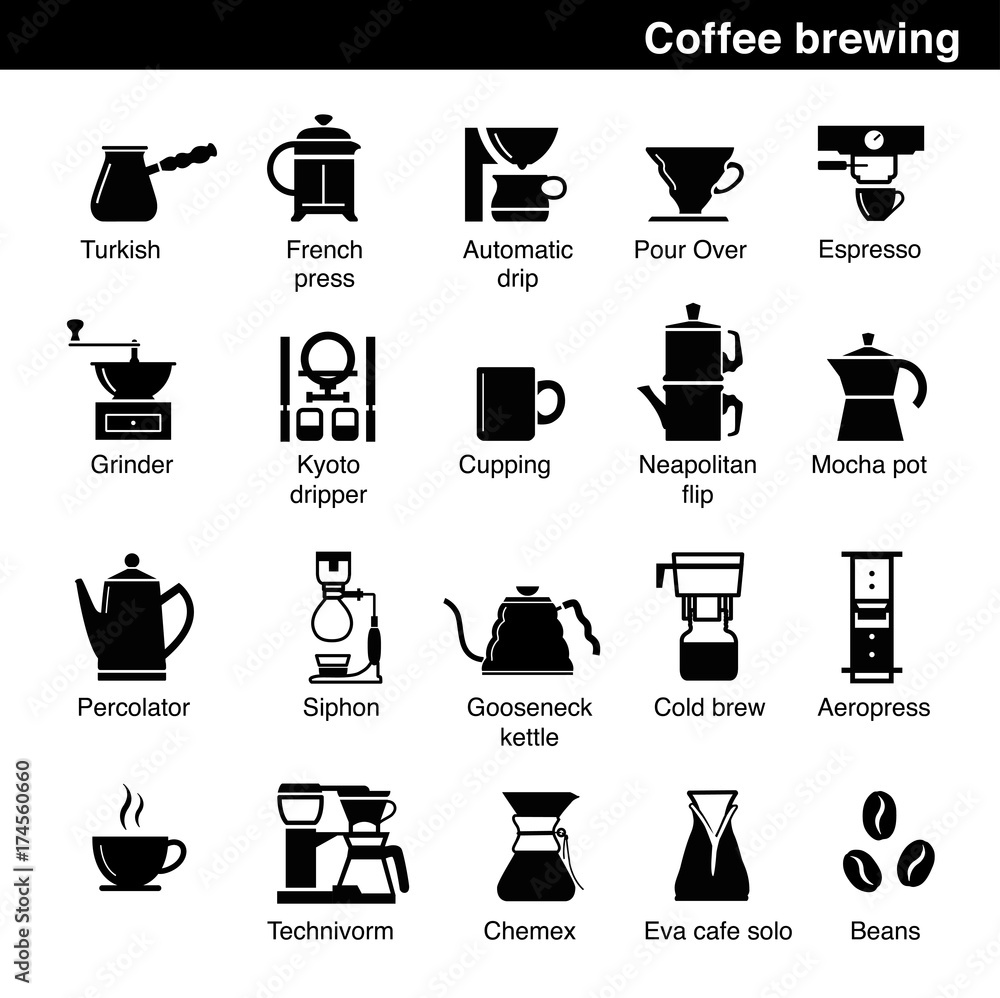The Effect of Various Coffee Brewing Methods on Flavor and Scent
The Effect of Various Coffee Brewing Methods on Flavor and Scent
Blog Article
Understanding Various Coffee Developing Approaches for a Richer Taste Experience
A comprehensive understanding of various coffee brewing methods can profoundly impact your taste experience, exposing the elaborate nuances of this beloved drink. As you consider which come close to finest matches your preference choices, the question stays: exactly how do these methods affect the last cup, and which might elevate your coffee experience to brand-new elevations?
Drip Coffee Machine
While numerous coffee enthusiasts value the subtleties of different brewing approaches, the drip coffee machine continues to be a staple in offices and households as a result of its simpleness and effectiveness. This appliance runs by heating water and permitting it to move with coffee grounds, removing oils and tastes, which then drip right into a carafe below.
The drip coffee machine is preferred for its ability to make multiple mugs at the same time, making it excellent for hectic mornings or events. Individuals can easily personalize the strength of their coffee by readjusting the amount of coffee premises used or picking a brew toughness establishing found in lots of contemporary machines. In addition, programmable features permit individuals to set a timer, making certain a fresh pot of coffee prepares upon waking.
Upkeep is fairly uncomplicated, as many drip coffee machine need periodic cleaning to get rid of mineral buildup. Lots of versions are also outfitted with functions such as car shut-off, which improves safety and security and energy performance. Inevitably, the drip coffee machine uses a user-friendly and trustworthy alternative for those seeking a constant and delightful coffee experience without the intricacies of even more intricate developing techniques.

French Press
The French press supplies a distinctive brewing experience that contrasts dramatically with the automatic procedure of a drip coffee machine. This manual technique enables an intimate communication with the coffee-making procedure, offering customers higher control over numerous criteria, such as soaking time, coffee-to-water ratio, and grind size.
To brew coffee using a French press, coarsely ground coffee beans are steeped in hot water for approximately four minutes. This immersion method extracts rich oils and flavors from the coffee, leading to a full-bodied beverage that highlights the nuances of the beans used. The metal or nylon mesh filter of the French press allows important oils to stay in the brew, contributing to its robust taste account.
When making use of a French press, it is necessary to take note of the developing time and water temperature level, as these variables dramatically affect the last taste. Experimentation with various coffee ranges and steeping periods can result in a customized flavor experience. Overall, the French press is a accessible and fulfilling technique for coffee enthusiasts looking for to grow their gratitude for the complexities of their favored drink.
Pour-Over Methods
Pour-over strategies elevate the coffee developing experience by allowing exact control over every aspect of the procedure, from water temperature to putting technique. This technique involves manually putting warm water over coffee premises in a filter, generally positioned in a dripper, which enables optimum extraction of tastes.
To start, choosing the appropriate coffee grind is vital; a medium to medium-fine work functions best to guarantee correct water flow and extraction (coffee brewing methods). Next off, water temperature must ideally range in between 195 ° F and 205 ° F, as this range draws out the ideal flavors without scalding the coffee
The putting method likewise plays an essential role. A sluggish, round activity when saturating the premises can help uniformly essence oils and tastes. It's frequently suggested to permit the coffee to grow for 30 seconds after the initial pour, which allows co2 retreat and boosts taste development.
Espresso Makers
For those looking for a various yet just as gratifying brewing experience, coffee equipments offer a distinct technique of coffee prep work that highlights stress removal. This procedure includes compeling warm water via finely-ground coffee at approximately 9 bars of pressure, resulting in a concentrated shot of espresso that showcases abundant tastes and scents.

The quality of coffee is affected by a number of elements, consisting of work size, dose, water temperature level, and removal time. Accomplishing the ideal coffee shot calls for method and attention to information. Furthermore, the espresso acts as a base for different coffee beverages, such as cappucinos, cappuccinos, and Americanos, making it a versatile selection for coffee lovers.

Cold Mixture Techniques
Cold brew coffee has actually acquired popularity for its smooth, low-acidity account and redirected here refreshing preference, making it a suitable option for cozy weather condition or those conscious typical brewing approaches - coffee brewing methods. The process of cold developing generally entails steeping coarsely ground coffee beans in cool or room temperature level water for a prolonged duration, typically 12 to 24-hour. This technique extracts flavors differently than warm water, resulting in an abundant, complex mixture that highlights chocolatey and fruity notes
There are various cold mixture methods offered, consisting of immersion and drip brewing. The immersion technique is one of the most straightforward; merely combine coffee and water in a container, let it high, and after that strain the premises. Conversely, the drip technique makes use of a specialized coffee machine to gradually trickle water through coffee grounds, permitting for a more controlled removal procedure.
Regardless of the method selected, the coffee-to-water proportion is crucial, usually advised at 1:4 for a focused brew that can be weakened with water or milk prior to offering (coffee brewing methods). Cold mixture can be served over ice, combined with flavored syrups, or utilized as a base for numerous coffee drinks, offering flexibility and a special preference experience
Verdict
In final thought, checking out various coffee brewing approaches significantly improves the taste experience. Engaging with these diverse developing refines not only boosts admiration for coffee's intricacy however also encourages people to tailor their coffee enjoyment according to individual choices.
Users can easily customize the toughness of their advice coffee by changing the amount of coffee premises utilized or selecting a mixture toughness setting found in several straight from the source contemporary devices. Ultimately, the drip coffee manufacturer offers a reputable and user-friendly alternative for those looking for a consistent and enjoyable coffee experience without the intricacies of more intricate brewing approaches.
To make coffee using a French press, coarsely ground coffee beans are soaked in hot water for about 4 minutes. Conversely, the drip approach uses a specialized coffee manufacturer to slowly trickle water with coffee grounds, permitting for a more regulated extraction procedure.
Engaging with these diverse developing refines not only improves appreciation for coffee's intricacy yet additionally empowers people to customize their coffee enjoyment according to individual choices.
Report this page